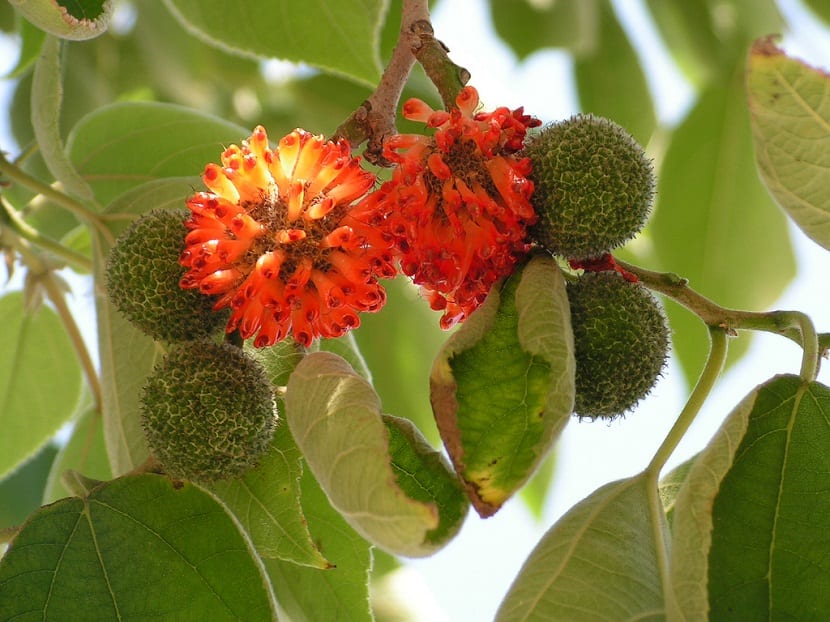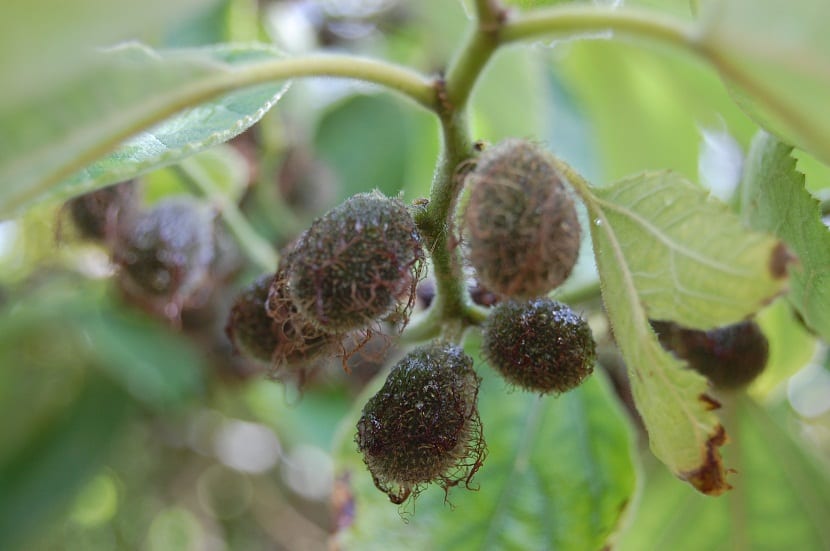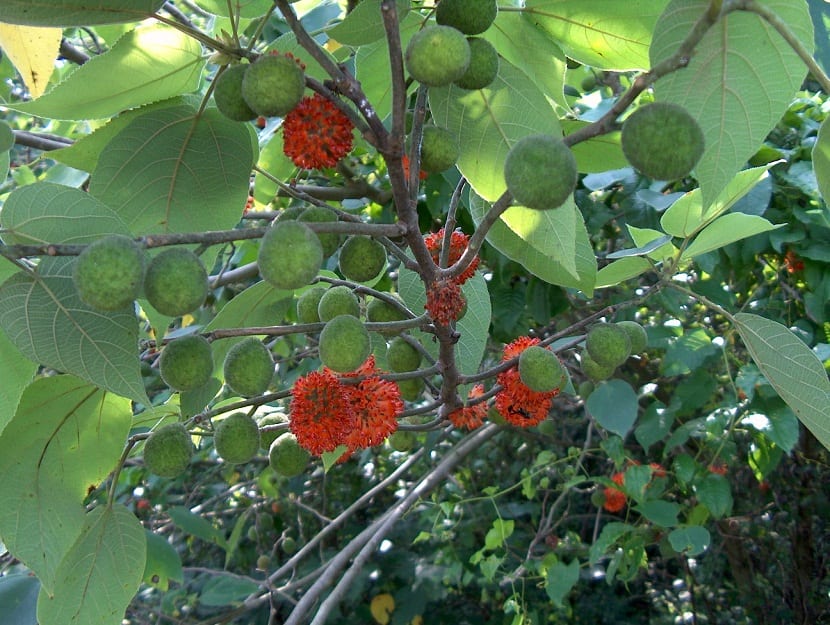
La Broussonetia papyrifera It usually reaches a height of up to 15 meters and is characterized by the different shapes that its leaves present. This tree is commonly used since ancient times for the paper making and manufacturing.
It is also known by the name of Paper mulberry or Turkish mulberry, being originally from the Asian region. To learn more about this tree Broussonetia papyrifera it is recommended to read the following article.
Features

They comment that this plant is very invasive, but is it really? It has a highly landscaping value, its growth in spaces that are not native to its development tends to damage the habitat and behaves as a kind of intrusive plant for the ecosystem where it was placed.
The plant itself requires many sources of water and its root system is quite superficial, making it sensitive to strong winds. This tree is very useful thanks to its tender leaves, as well as its shoots provide food for deer.
For example and on the island of Fiji the bark is used for the famous 'masi' fabrics, which tend to be dyed and decorated with traditional island motifs to give rise to various celebrations with decorative elements typical of the ingenuity.
As well used to elaborate and manufacture traditional textile products for a variety of ceremonies ranging from birth to marriage.
The internal structure of this tree is a bark composed of robust fibers that allow the generation of fibers similar to hemp and flax. This allows the production of very resistant paper.
In Japan, a fiber for the same purpose is also extracted from this tree. In Polynesia a cloth known as 'tapa' is manufactured where the multiple uses for varied purposes are evident.
The main characteristics of this plant can be summarized below:
It belongs to the Moráceas family and its genus belongs to the Broussonetia, trees made up of seven species which are highly sought after for their foliage and flowers. They are native to Asia and have a very fast growth with a height that ranges from 6 to 15 meters. The crown is sub-globose and the color varies from dark green, the fruit being quite fleshy.
The bark of the tree is brown and slightly split, its roots are gemmiferous and its soils must conform to rustic, sandy, dry and wet soils.
Cultivation of Broussonetia papyrifera

Flowering takes place in late spring and thrives in cold sensitive climates. It also adapts to maritime climates. The multiplication is through green wood cuttings in the summer season and by seeds in the fall.
Uses
As already mentioned, its use corresponds to ornamental, industrial use and is seen as shade tree.
The fruits are very rich and sweet, being very pleasant to the palate. Regarding quality, this will vary according to the type of tree. The fruits can be tasted fresh or can even be added to desserts and preserves. In health cases this fruit serves as a diuretic and for stomach problems.
The leaves of this tree induce perspiration, also helping to avoid diarrhea. As poultices it helps for skin problems and against stings.
On the island of Hawaii it is customary to use the sap as a mild laxative. In China, the leaves and the fruit use it as a kidney and liver tonic. It is also believed to help improve vision. In the same way it helps in the problems of fatigue and weakness and problems with the joints.
There are also demonstrations that refer that the tree has certain parts that act as antioxidants. Has antifungal and antibacterial properties. They are currently conducting research related to the ability of this tree to remove freckles or warts.
Hello
I would like to know where I can find the fruit of this tree in Spain.
I would like to plant this Tree in my house as well.
Could someone give me a guide?
Thank you!
Hello david.
You can buy seeds on Amazon, from here. If you prefer a grown tree, we recommend you contact nurseries in your area.
Regarding how to plant the tree, in this article we talked about it 🙂.
Greetings.
David, this is a kind of tree that you have to be very careful about when you decide to have one in your house, they are very showy, deciduous and the biggest difficulty is that once it has rooted, it spreads very quickly. It is also important that you know that there are two classes, the one that appears in the photos of this article and the other, which has no fruit. I think it must be because one is a female tree and the other is not.
It is all true what the article comments, since I was a child I lived in environments where this tree was present and I can corroborate what it says as true. I do not know the effectiveness of the fruit in everything it expresses about the properties, but I do know that it is very pleasant to the palate. Many times I have thought that this species could very well help reforest sectors that have been preyed upon by human hands, when the specimen is a certain age, the wood serves as firewood, acquiring an orange color inside.
Thank you very much for your comments and the information provided. It sure serves more than one 🙂
Greetings, and happy holidays.